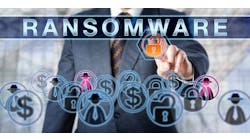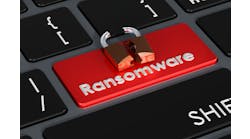A little more than a month ago, Community Hospital was not in the most enviable of positions for a hospital.
The 450-bed, regional tertiary care facility in Munster, Ind. became home to the first patient in the U.S. with a confirmed case of Middle East Respiratory Syndrome Coronavirus (MERS-CoV) in late April. The potentially deadly viral respiratory illness, which has no known recommended vaccine or treatment, can spread like wildfire to anyone in close contact with the patient. In Saudi Arabia, where it likely originated, the Centers for Disease Control (CDC) say there have been 450 lab-confirmed cases and 112 deaths (as of May 2014).
Community Hospital
It’s fair to surmise that things could have gone very badly for Community Hospital. Look no farther than Abu Dhabi, where experts from the World Health Organization (WHO) say that failure to control the virus by hospitals and healthcare settings in the city have exacerbated the problem. If MERS had spread in the U.S., Community Hospital, which is located very close to one of the busiest interstate highways in the nation, very well could have been targeted for blame.
Instead, MERS cases in the U.S. have been few and far between, and not one person has contracted the virus from the patient who stepped into the Community Hospital’s ER the night of April 28th. Much of this has to do with Community Hospital’s fast acting approach in treating the patient from the minute he arrived.
“We have protocols and procedures in place that we like to use. When someone has respiratory symptoms, we like to isolate them every time because there are some diseases that we’re not aware of that could be contagious,” says Alan Kumar, M.D., Chief Medical Information Officer at Community Hospital. “You don’t want to take chances. We had a room that was negative airflow [when the air from the room doesn’t mix the rest of the hospital]. We put him in that room in the possibility that it was something bad.”
It ended up being something bad.
Thanks to the infectious disease specialist finding out the patient had recently visited Saudi Arabia, she and other members of Community’s medical staff were able to deduce that he likely had MERS. The isolation was amped up with Community using gloves, masks, gowns, and all kinds of protection. Two days later, a test confirmed that the patient was positive for MERS. The hospital began working with the CDC and Indiana Department of Health to ensure the disease didn’t spread and that the Community Hospital workers and public were being educated.
One important task was to determine who had come into contact with the patient and was possibly at risk for MERS. To do this, Community relied on video footage, patient interaction notes in the electronic medical record (EMR), and radio-frequency identification (RFID)-based technology.
The RFID system (from the Traverse City, Mich.-based Versus Technology) was installed by Community in 2009 to decrease overhead noise in hospital units. It automatically logs when healthcare providers have entered the room, how long they’ve been in a room, and how long it takes from them to go from one room to the next. Thus, when nurses and doctors are needed, the hospital knows where they are located. In this case, it allowed them to track who was in the room with the MERS patient and for how long.
“The CDC found this data absolutely amazing because it’s something they never had access to in any prior investigation, to know down to the minute and down to the second, how long a healthcare worker was in contact with the patient,” says Kumar. He adds that for those healthcare workers who don’t wear the RFID tags, such as ambulatory workers, imaging specialists, and social workers, the EMR was a useful tool in tracking interactions.
Alan Kumar, M.D.
A few weeks after he first stepped into the hospital, the patient was cleared of the virus and deemed not a risk to the public. Every single person who came in contact with him was tested. Even though none of them came back positive, they were taken offline until the longest window of incubation (14 days) had passed. They were repeat tested after that window and again, none tested positive.
From beginning to end, Community Hospital was able to escape this incident unscathed. Everything went smoothly when it absolutely had to go smoothly. When it comes to the role RFID and other health IT played in this success, Kumar says there is a lesson to be learned for other hospital executives.
“It’s not meant to watch employees. It’s meant for something more admirable. If you approach IT spending with the goal of ‘Does this improve quality of care to patients?’ and the answer is yes, that’s why you invest. Everything else is secondary to that goal,” Kumar concludes.




